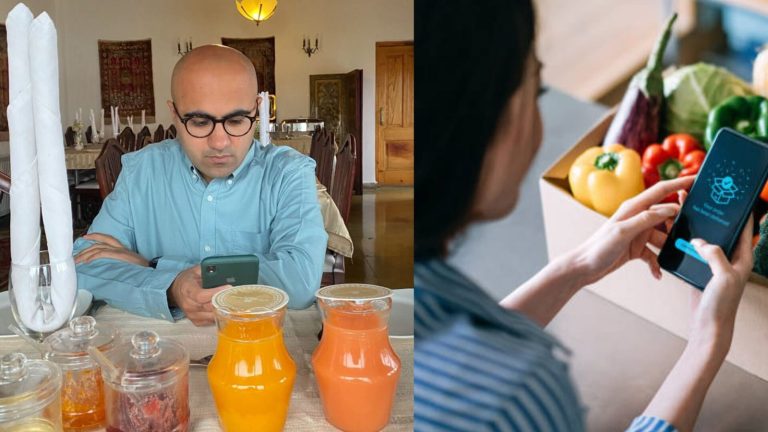A man whose LinkedIn bio identifies him as Sarthak Ahuja, Director of Niamh Ventures Private Limited, has claimed to have observed a striking phenomenon about how India’s fast-growing quick commerce apps might be adjusting their pricing strategies based on what’s installed on your phone.
Ahuja exemplified how downloading the online grocery delivery app Swiggy Instamart on his phone apparently led to a drop in prices on the Blinkit app.
“The moment I downloaded Swiggy Instamart on my phone… I noticed the prices on the Blinkit app went down,” he wrote.
According to the post, the Director noticed that after installing a competing app like Swiggy Instamart, Blinkit’s delivery charges and prices for non-MRP commodities (like fruits and vegetables) dropped by nearly 20%.
Read | Swiggy stock tumbles 6% in biggest 1-day crash in over 2 months. What triggered the sharp slide?
“If Blinkit charges you, say, ₹21 to deliver your order on average, including packing fees, delivery charges, etc., you’d notice that the moment you download a competitor, these charges reduce by about 20%,” the post reads.
Even more worrying is the broader digital privacy concern flagged:
The Director suggests that apps you download — like Dream11 (fantasy sports) or crypto trading apps — could contribute to your risk profiling when applying for loans.
Read | Are Swiggy and Zepto failing blind users? Delhi high court to hear accessibility case
“I’m almost certain it contributes to your digital footprint as that of a risky persona,” the post claims, warning that financial institutions might offer higher interest rates based on app usage patterns.
The Director proposed two immediate action steps for smartphone users:
1. Download competing apps and switch between them often to pressure companies into offering better prices — even if the effect is temporary.
2. Consider using a ‘household phone’ (such as a mother’s phone in many Indian families) for shopping and sensitive transactions, minimizing personal digital profiling.
The post has touched a nerve, resonating with users across LinkedIn who shared their own anecdotes about algorithmic pricing and digital tracking.
Here’s how netizens reacted:
A user wrote:
“Sarthak Ahuja: I can give you one tip that I noticed while ordering groceries as a test sample to make sure if it’s true or not:
I use a Vivo X200 (it’s around 80k), and when I add a few staples and groceries in the cart, the total was around 6k.
Read | Swiggy launches Pyng app for professional services: Book health experts, financial advisors & more on iOS, Android
I found another Android phone, I think the price is around 10k or so. When I downloaded the same app, added the same stuff, the price was around 3.5k.
I won’t name the app, but if you have an Android phone or arrange one priced around 8k or 10k, you’ll find this similarity on all apps, be it any.
If you want, I can make a sample video too for your reference, as I think they read phones’ IMEI numbers.”
“The algorithm doesn’t just watch what you do, it watches who you are. Competitor apps as price negotiation tools is genius. Also, love the idea of a ‘mother’s phone’ as the last bastion of digital anonymity.”
“This is insightful. We have heard about device-based pricing (based on higher platform fees of iOS than Android), but most people are not aware of competitor-based pricing by just downloading a rival app. This is just like digital bargaining.”



